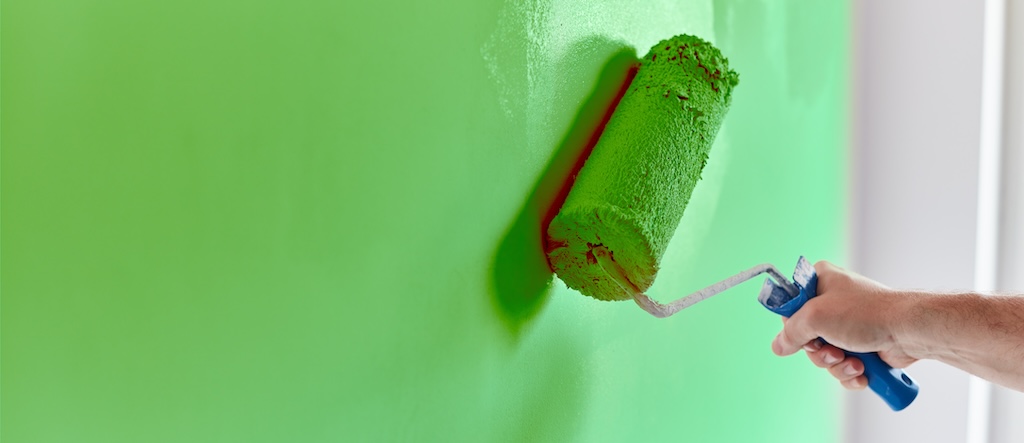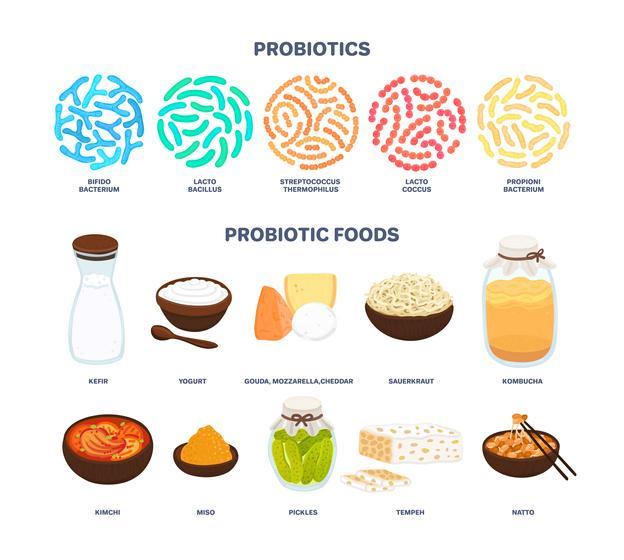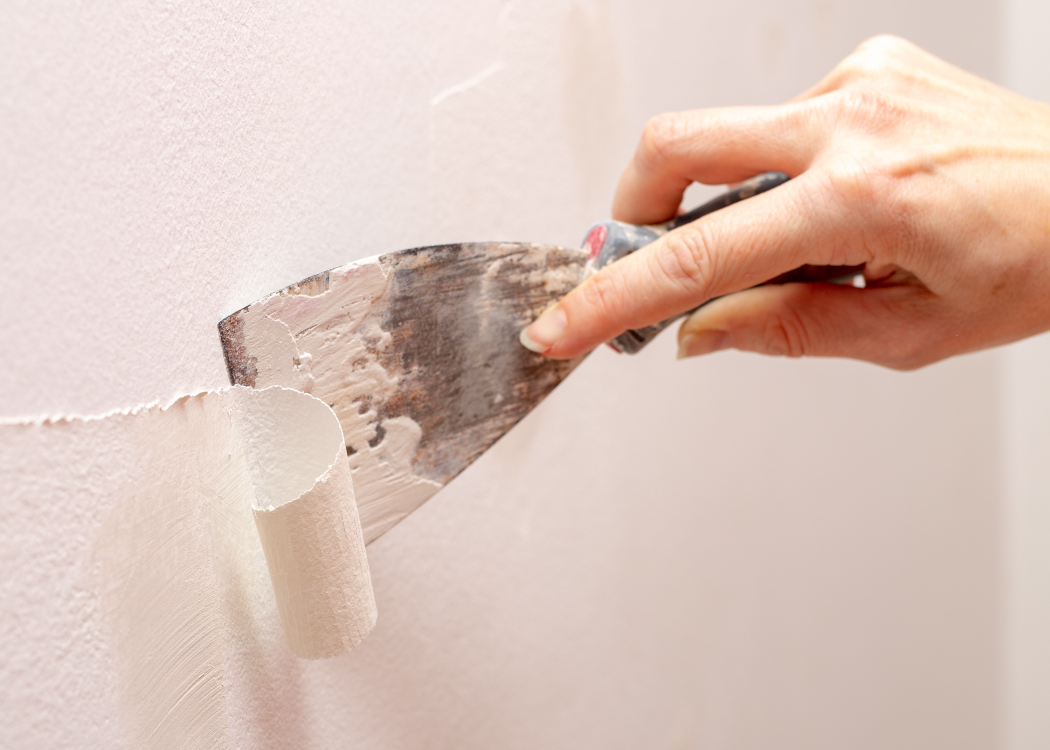When it comes to giving your home a fresh coat of paint, the choice of materials can have a significant impact not only on the aesthetic but also on the environment and your health. Choosing natural paints for your home is an eco-conscious decision that more and more homeowners are considering. Natural paints offer a variety of benefits, from reducing indoor air pollution to being kinder to the planet.
The traditional paints often contain volatile organic compounds (VOCs) that can release harmful chemicals into the air for years after application. By opting for natural, non-toxic options, you can improve the air quality of your home and contribute to a healthier environment.
How to choose natural paints for your home?
Understanding what makes paint “natural” is the first step in making an informed choice. Look for paints that are water-based and contain organic materials such as clay, chalk, or lime. These ingredients are less harmful and often come from renewable sources.
With the growing demand for eco-friendly products, you’ll find more brands offering non-toxic paints with a range of colors and finishes. Reading labels carefully and checking for certifications can help you verify the paint’s eco credentials.
Consider the room you’re painting and the durability you need. For instance, areas with high humidity like bathrooms may require different paint types compared to a living room or bedroom.
Research is key when choosing natural paints for your home. Look for reputable brands with transparent ingredient lists and seek out customer reviews to gauge the quality and performance of the paint.
What are the benefits of eco-friendly paints?
Eco-friendly paints not only create a beautiful finish but also offer several health and environmental benefits. They reduce the emission of harmful chemicals, improving indoor air quality and reducing the risk of health issues associated with traditional paints.
These sustainable options are often biodegradable, meaning they have less impact on the environment when disposed of. They also require less energy and resources to produce, further reducing their environmental footprint.
- Improved air quality within your home
- Safer for families, especially children and pets
- Contribution to overall environmental protection
Furthermore, eco-friendly paints support healthier living spaces by limiting the growth of mold and bacteria, thanks to their natural composition.
Which certifications should you look for in paints?
Certifications like GREENGUARD and EcoLogo are excellent indicators of a paint’s eco-friendliness. These certifications ensure that the products meet stringent environmental standards and are tested for chemical emissions.

Other certifications to look for include the Leadership in Energy and Environmental Design (LEED) and the Global Organic Textile Standard (GOTS) for paints with organic ingredients.
Certified paints usually provide better coverage and durability, meaning you’ll need less paint and fewer resources in the long run.
How do natural paints differ from conventional paints?
Natural paints are formulated with ingredients from the earth, such as clay and plant dyes, which are renewable and biodegradable. Conventional paints, on the other hand, are often petroleum-based and contain synthetic chemicals and VOCs.
The manufacturing process of natural paints also tends to be more eco-friendly, with a focus on minimizing waste and energy consumption. Conventional paints require chemical solvents, which can be harmful to both the environment and human health during production and application.
When it comes to application and maintenance, natural paints may require different methods and care compared to conventional paints, so it’s essential to follow the manufacturer’s instructions for the best results.
What are the key ingredients in eco-friendly paints?
Eco-friendly paints are generally comprised of a combination of natural pigments, binders, and solvents. Ingredients like water-based acrylics, natural pigments, and organic clay are common and provide a variety of colors and textures.
Binders such as vegetable starch or casein from milk help to hold the pigment in place once the paint dries. Solvents, which keep the paint in a liquid form until applied to a surface, are typically water in eco-friendly paints, contributing to their low-VOC content.
Understanding these ingredients is crucial when selecting the right paint for your home, as they affect everything from the paint’s durability to its environmental impact.
Why are low and zero VOC paints important for health?
VOCs are responsible for the “new paint” smell and can cause headaches, nausea, and respiratory issues. Prolonged exposure to high levels of VOCs has been linked to more serious health problems. Low and zero VOC paints minimize these risks, creating a safer environment for you and your family.
By choosing paints with low or zero VOCs, you’re also helping to reduce outdoor smog levels, as VOCs react with other pollutants under sunlight to form ground-level ozone.

It’s especially important to select low or zero VOC paints for spaces used by children, the elderly, and those with allergies or respiratory issues, as they are more susceptible to the effects of poor indoor air quality.
How to ensure a sustainable paint choice for your home?
Making a sustainable paint choice involves more than just selecting an eco-friendly product off the shelf. Start by calculating exactly how much paint you need to avoid waste. Look for local manufacturers to reduce the carbon footprint associated with transportation.
Consider the entire lifecycle of the paint, from production to disposal. Choose brands that use recyclable packaging and take advantage of paint recycling programs when disposing of leftover paint.
Finally, think about the longevity of the paint. A durable, high-quality eco-friendly paint might have a higher upfront cost but can save you money and reduce environmental impact in the long run.
Related questions on choosing natural paints for your home
What is the best non toxic paint for home interiors?
Finding the best non-toxic paint for home interiors depends on your specific needs. Water-based paints with natural pigments and binders are generally the safest options. Look for brands that boast certifications indicating low or zero VOC content.
Several eco-friendly paint brands have been recognized for their non-toxic formulations and sustainable practices. Researching and comparing these brands can help you make an informed decision.
How to choose natural paints for exterior walls?
When selecting natural paints for exterior walls, consider the climate and the durability required. Paints that withstand various weather conditions without fading or chalking are ideal. Look for options that offer good coverage, are water-resistant, and have natural fungicides to prevent mold growth.
Consult with professionals or look for online resources to find the best natural paint options for exterior use. Remember, the right paint will not only protect your home but also the environment.
What are the benefits of using eco friendly paint for art projects?
Eco-friendly paint for art projects is beneficial for both the artist’s health and the environment. These paints usually contain natural ingredients, reducing exposure to harsh chemicals.
They also contribute to a more sustainable art practice by minimizing the toxic waste that can come from disposing of traditional art materials. As an artist, using eco-friendly paints can also be a unique selling point for your work.

Are there non toxic paint options for babies’ rooms?
Yes, there are non-toxic paint options specifically designed for babies’ rooms. These paints have low or zero VOCs and are free from heavy metals and other toxic additives. They’re often odorless or have a very mild scent, making them perfect for sensitive environments.
It’s crucial to ensure the room is well-ventilated during the painting process and allow adequate drying time before the baby occupies the space.
How to make eco friendly paint at home?
Making eco-friendly paint at home is possible with simple ingredients like flour, water, and natural colorants. There are several recipes available online that can guide you through the process. Homemade paints are a great option for small projects or when you want to have complete control over the ingredients used.
Remember, while homemade paints can be fun and safe, they may not offer the same durability or finish as commercially available eco-friendly paints.
Choosing natural paints for your home is not just about the color on the walls; it’s a commitment to health and sustainability. By considering the factors discussed and asking the right questions, you can transform your home with paints that are as friendly to the environment as they are to you and your family.
For those interested in seeing eco-friendly paint in action, check out this insightful video:
As we navigate the choices available, we’re reminded that every small decision can have a large impact. Next time you’re considering a new look for your home, remember the long-lasting benefits that choosing natural paints for your home can provide. Not only will you be creating a beautiful space, but you’ll also be investing in the health of your family and the planet.
 3 Best Natural and Non-Toxic Rug Brands: A Healthier Choice for Your Home
3 Best Natural and Non-Toxic Rug Brands: A Healthier Choice for Your Home






This is such a great read! I’ve been thinking about repainting my living room, and this post really highlights the importance of choosing eco-friendly options. It’s awesome to see how natural paints not only make our spaces look amazing but also contribute to better air quality and sustainability. Love the idea of being more conscious about the materials we use in our homes. Thanks for breaking down all the details and certifications to look out for—super helpful!